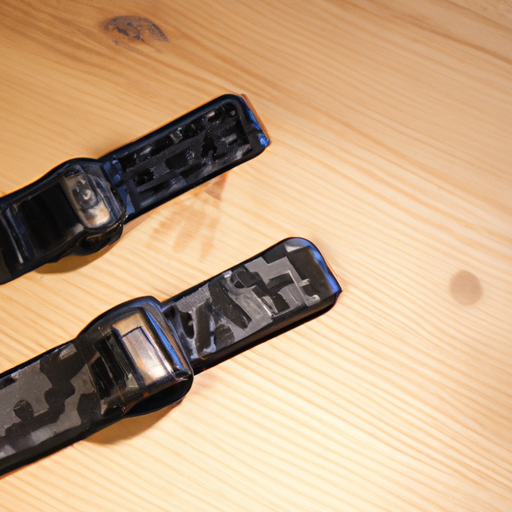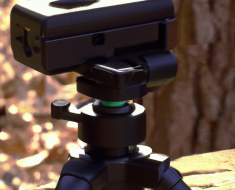“Protect your investment with the perfect handguard choice.”
Material Options for Handguards
When it comes to building your own rifle, choosing the right handguard is an important decision that can have a significant impact on the overall performance and feel of your firearm. Handguards come in a variety of materials, each with its own unique set of characteristics and benefits. In this article, we will discuss some of the most common material options for handguards to help you make an informed decision for your rifle build.
One of the most popular materials for handguards is aluminum. Aluminum handguards are lightweight and durable, making them a great choice for those looking for a balance of strength and weight savings. They are also highly resistant to corrosion, which can be important if you plan on using your rifle in harsh environments or inclement weather conditions. Additionally, aluminum handguards can be easily customized with various finishes and colors to match your personal preferences or the aesthetic of your rifle build.
Another popular material option for handguards is polymer. Polymer handguards are lightweight and affordable, making them a great choice for budget-conscious builders or those looking to keep their rifle as light as possible. While polymer may not be as strong or durable as aluminum, it is still a reliable option for most shooters. Polymer handguards are also available in a wide range of colors and styles, allowing you to customize your rifle build to your liking.
For those looking for the ultimate in strength and durability, carbon fiber handguards are an excellent choice. Carbon fiber is an extremely strong and lightweight material that is commonly used in high-performance applications such as aerospace and motorsports. Carbon fiber handguards are incredibly rigid and resistant to heat and corrosion, making them an ideal choice for shooters who demand the best performance from their equipment. While carbon fiber handguards may be more expensive than other options, their unparalleled strength and durability make them well worth the investment for serious shooters.
In addition to these common material options, there are also handguards made from steel, titanium, and other exotic metals. Steel handguards are incredibly strong and durable, but they can add significant weight to your rifle build. Titanium handguards offer similar strength to steel but with a lighter weight, making them a popular choice among shooters who prioritize weight savings without sacrificing durability.
When choosing the right material for your handguard, it is important to consider your individual needs and preferences. If you prioritize strength and durability above all else, carbon fiber or steel may be the best options for you. If weight savings are a priority, aluminum or titanium may be more suitable choices. Ultimately, the best material for your handguard will depend on your specific requirements and intended use for your rifle build.
In conclusion, selecting the right material for your handguard is an important decision that can have a significant impact on the performance and feel of your rifle build. Whether you prioritize strength, weight savings, or customization options, there is a material option out there to suit your needs. By carefully considering the characteristics and benefits of each material option discussed in this article, you can make an informed decision that will help you get the most out of your rifle build.
Length and Weight Considerations
When building your own rifle, one of the most important decisions you’ll have to make is choosing the right handguard. Handguards not only provide protection for your hands from the heat generated by firing your rifle, but they also offer a mounting platform for accessories like optics, lights, and grips. In this article, we’ll discuss some key factors to consider when selecting a handguard for your rifle build.
One of the first things to think about when choosing a handguard is its length. Handguards come in various lengths, ranging from carbine-length (around 7 inches) to rifle-length (around 15 inches). The length of the handguard you choose will depend on the length of your barrel and how far out you want to extend your handguard. A longer handguard can provide more rail space for mounting accessories, while a shorter handguard may be more lightweight and compact.
Another important consideration when selecting a handguard is its weight. The weight of the handguard can have a significant impact on the overall balance and handling of your rifle. A heavier handguard can make your rifle feel front-heavy and cumbersome, while a lighter handguard can make it easier to maneuver and shoot accurately. Consider how you plan to use your rifle – if you’ll be carrying it for long periods or shooting from various positions, a lighter handguard may be more comfortable.
In addition to length and weight, you’ll also want to think about the material and construction of the handguard. Handguards are typically made from aluminum, polymer, or carbon fiber. Aluminum handguards are durable and offer good heat dissipation, but they can add weight to your rifle. Polymer handguards are lightweight and affordable, but may not be as durable as aluminum. Carbon fiber handguards are lightweight and strong, but can be more expensive.
When choosing a handguard for your rifle build, it’s important to strike a balance between length, weight, material, and construction. Consider how you plan to use your rifle and what accessories you want to mount on it. If you’re building a lightweight carbine for fast-paced shooting competitions, a shorter, lighter handguard may be ideal. If you’re building a precision rifle for long-range shooting, a longer handguard with plenty of rail space may be more suitable.
Ultimately, the right handguard for your rifle build will depend on your personal preferences and intended use. Take the time to research different options and consider how each one will affect the performance and handling of your rifle. By choosing a handguard that fits your needs and preferences, you can ensure that your rifle build is successful and enjoyable to shoot.
Mounting Systems: Free Float vs Drop-In

When it comes to building your own rifle, choosing the right handguard is a crucial decision that can have a significant impact on the overall performance and aesthetics of your firearm. Handguards come in various shapes, sizes, and mounting systems, with two of the most common options being free float and drop-in handguards. In this article, we will explore the differences between these two mounting systems to help you make an informed decision for your rifle build.
Free float handguards are designed to float freely around the barrel of the rifle without making contact with it. This design eliminates any interference that may affect the accuracy of your shots, making free float handguards a popular choice among precision shooters. The lack of contact between the handguard and barrel also allows for better heat dissipation, which can be beneficial during extended shooting sessions.
On the other hand, drop-in handguards are mounted directly onto the rifle barrel and receiver, providing a more secure and stable platform for accessories such as optics and lights. While drop-in handguards may not offer the same level of accuracy as free float handguards, they are often easier to install and more cost-effective.
When deciding between free float and drop-in handguards, it is essential to consider your intended use for the rifle. If you are building a precision rifle for long-range shooting or competition purposes, a free float handguard may be the better option due to its superior accuracy and heat dissipation capabilities. However, if you are looking to build a tactical or hunting rifle where quick and easy accessory attachment is essential, a drop-in handguard may be more suitable for your needs.
Another factor to consider when choosing between free float and drop-in handguards is weight. Free float handguards tend to be lighter than drop-in handguards due to their minimalist design. This weight savings can be advantageous if you plan on carrying your rifle for extended periods or if you are looking to minimize overall rifle weight for better maneuverability.
In terms of customization options, both free float and drop-in handguards offer a wide range of choices to suit your personal preferences. Free float handguards typically have more mounting points for accessories such as bipods, sling mounts, and rail sections, allowing for greater flexibility in configuring your rifle setup. Drop-in handguards may have fewer customization options but still provide ample space for attaching essential accessories.
Ultimately, the decision between free float and drop-in handguards comes down to personal preference and intended use. If accuracy and heat dissipation are top priorities for your rifle build, a free float handguard may be the best choice. However, if ease of installation and accessory attachment is more important to you, a drop-in handguard may be the way to go.
Regardless of which mounting system you choose, selecting a high-quality handguard from a reputable manufacturer is essential to ensure reliability and durability. Take the time to research different options, read reviews from other shooters, and consider your specific needs before making a final decision. With the right handguard in place, your rifle build will be well-equipped for success on the range or in the field.
Rail Systems and Attachment Options
When building a rifle, one of the key components to consider is the handguard. The handguard plays a crucial role in protecting your hands from the heat generated by the barrel, as well as providing a platform for attaching accessories such as lights, lasers, and grips. With so many options available on the market, choosing the right handguard for your rifle build can be a daunting task. In this article, we will discuss some of the key factors to consider when selecting a handguard for your rifle build.
One of the first things to consider when choosing a handguard is the type of rail system you want to use. Rail systems come in various lengths and configurations, such as Picatinny, KeyMod, and M-LOK. Each type of rail system has its own advantages and disadvantages, so it’s important to choose one that best suits your needs.
Picatinny rail systems are perhaps the most common type of rail system used on rifles today. They feature a series of ridges and slots that allow for easy attachment of accessories using Picatinny-compatible mounts. However, Picatinny rails can be heavy and bulky, which may not be ideal for those looking to keep their rifle build lightweight and streamlined.
KeyMod and M-LOK rail systems, on the other hand, are newer designs that offer a more lightweight and slim profile compared to Picatinny rails. KeyMod rails feature keyhole-shaped mounting slots that allow for quick and easy attachment of accessories, while M-LOK rails use a similar concept with elongated slots instead. Both KeyMod and M-LOK rail systems are popular choices among shooters looking to reduce weight and bulk on their rifle builds.
Once you’ve decided on a rail system, you’ll need to consider the length of the handguard. Handguards come in various lengths, ranging from carbine-length (around 7 inches) to rifle-length (around 15 inches). The length of the handguard you choose will depend on personal preference and the type of shooting you plan to do with your rifle.
A longer handguard can provide more real estate for attaching accessories and can also offer more protection for your hands from the heat generated by the barrel. However, longer handguards can add weight to your rifle and may not be necessary if you don’t plan on attaching many accessories.
On the other hand, a shorter handguard can help reduce weight and keep your rifle build compact and maneuverable. However, you may have limited space for attaching accessories, so it’s important to consider how many accessories you plan to mount on your rifle before choosing a handguard length.
In addition to rail system type and length, you’ll also need to consider material when choosing a handguard for your rifle build. Handguards are typically made from aluminum, polymer, or carbon fiber. Aluminum handguards are durable and lightweight but can be prone to heating up quickly during extended shooting sessions. Polymer handguards are lightweight and affordable but may not be as durable as aluminum. Carbon fiber handguards offer excellent strength-to-weight ratio but tend to be more expensive than aluminum or polymer options.
Ultimately, choosing the right handguard for your rifle build will depend on your personal preferences and shooting needs. By considering factors such as rail system type, length, and material, you can select a handguard that best suits your individual requirements. Whether you prioritize weight savings, durability, or customization options, there is a handguard out there that will help you achieve your ideal rifle build.
Heat Dissipation and Ventilation Features
When it comes to building your own rifle, there are a plethora of options to consider. One crucial component that often gets overlooked is the handguard. The handguard plays a significant role in the overall performance of your rifle, particularly in terms of heat dissipation and ventilation.
Heat dissipation is a critical factor to consider when choosing a handguard for your rifle build. As you fire your rifle, the barrel heats up, which can affect the accuracy and reliability of your shots. A handguard with good heat dissipation properties can help mitigate this issue by allowing the heat to dissipate quickly and efficiently.
One popular material for handguards that excel in heat dissipation is aluminum. Aluminum handguards are lightweight, durable, and have excellent thermal conductivity, making them ideal for dissipating heat effectively. Additionally, aluminum handguards often feature a sleek design and are available in various lengths and styles to suit your preferences.
Another important feature to consider when choosing a handguard for your rifle build is ventilation. Proper ventilation helps prevent overheating of the barrel and other components, ensuring consistent performance and longevity of your rifle. Handguards with vent holes or slots allow air to flow around the barrel, helping to cool it down during extended shooting sessions.
M-LOK and KeyMod handguards are popular choices that offer excellent ventilation due to their modular design. These handguards feature attachment points along the sides or bottom where you can easily mount accessories such as rail sections or grips. This not only provides customization options but also allows for increased airflow around the barrel for improved cooling.
When selecting a handguard for your rifle build, it’s essential to consider how you plan to use your rifle. If you anticipate engaging in high-intensity shooting activities such as competitions or tactical training, a handguard with superior heat dissipation and ventilation features is paramount to ensure optimal performance under demanding conditions.
Furthermore, it’s worth noting that certain accessories or modifications can also impact the heat dissipation and ventilation capabilities of your handguard. For example, adding a suppressor or muzzle brake can increase the heat generated by the barrel, requiring a handguard with enhanced cooling properties.
In conclusion, choosing the right handguard for your rifle build is crucial for achieving optimal performance and reliability. Heat dissipation and ventilation features play a significant role in maintaining the temperature of critical components such as the barrel and ensuring consistent accuracy during prolonged shooting sessions.
Whether you opt for an aluminum handguard for its excellent heat dissipation properties or prefer a modular M-LOK or KeyMod design for enhanced ventilation, selecting a handguard that meets your specific needs and preferences will ultimately enhance your shooting experience. So take the time to research and choose wisely – your rifle build deserves nothing less than the best handguard for maximum performance.




